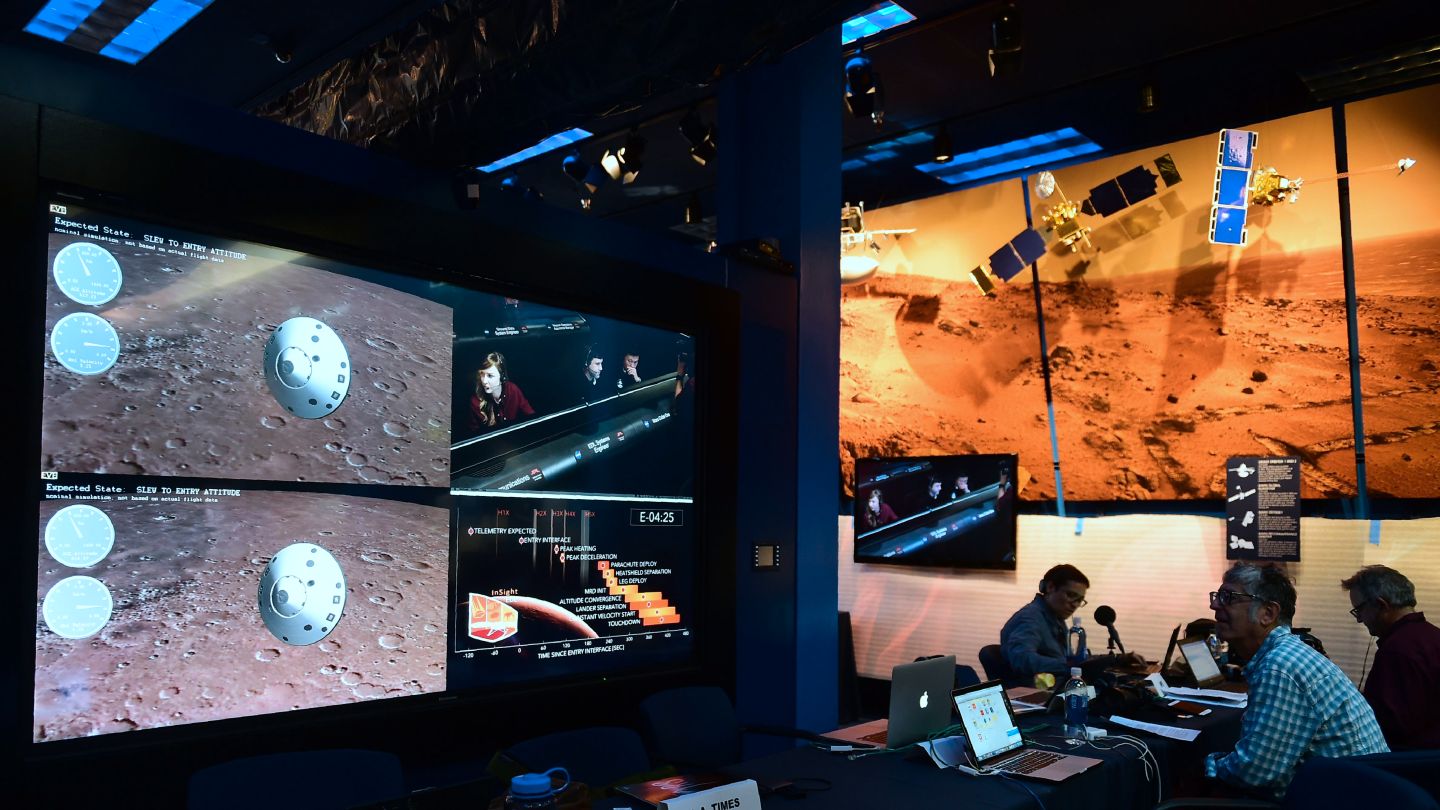
Is Mars dead? It's not as academic a question as it may first appear. Yes, understanding how the fourth planet went from a vibrant, water-covered world with tectonic action and erupting volcanos and an internal dynamo that produced a global magnetic field, to what we we see today—cold, barren, rusty Mars—could help us understand how rocky planets form and perish, and offer clues into the past and future of our own Earth. But: dream bigger. If we ever hope to live on Mars some day, it'd better not be dead.
Life needs a planet that's quickening and convulsing. The Mars we see is too cold and its atmosphere too thin for liquid water to form, but that may not be the case if there is volcanic activity, even underground. But we could conceivably bring, or make, our own water. What we can't create, except in our wildest speculations, is a magnetic field. Mars used to have one, until about 3.8 billion years ago. It's unclear exactly how it was powered, or why it shut off, but we know what happened without it. Without the protection of a magnetic field, solar winds stripped away the planet's atmosphere, leaving it fully inhospitable. Without a magnetosphere, solar and cosmic radiation bombards the unshielded surface. Prolonged exposure for humans on Mars would mean cancer, radiation sickness, genetic damage; certain solar irruptions would be instantly fatal. (Earth's magnetosphere saves our asses on the regular, as recently as yesterday.)
If Mars is dead, it's no place for us. But what if Mars were just sitting quietly—not dead, merely in torpor? And what if that torpor were reversible? What if there were still a liquid core that could, theoretically, be got going again? To know that, we'd need to know what's going on inside Mars, and to know that, there's a painfully simple method: land a seismometer on Mars. If Mars has marsquakes, we'd know that something's still happening in there.
NASA sent a pair of seismometers with the Viking missions in 1976, but one did not work, and the other was not sensitive enough to listen for marsquakes over the unceasing Martian winds. And then the idea kind of fell onto the backburner for a few decades; it's by no means an immediately crucial thing to know what's cooking inside Mars, and the space program had other priorities. But in recent decades, the scientific community's focus has shifted back toward the red planet—and here was one mystery which could be answered pretty definitively with current technology.
Enter InSight.

The InSight robotic lander (if you must, the tortured backronym is "Interior Exploration using Seismic Investigations, Geodesy and Heat Transport"), launched and managed by NASA with instruments made by various European space agencies, did not exactly cover itself in glory at first. A vacuum leak in one of the instruments—the all-important seismometer—forced a planned 2016 launch to be delayed by two years and added another $150 million to the mission's cost. But launch it did in May of 2018, and six and a half months later, InSight set down on Mars to listen. It didn't have to wait long.
Just two months after going fully online, InSight's seismometer recorded a marsquake with an origin indisputably in the interior of the planet. (There had been other shakes, but at low intensities it can be tough to tell a quake from a strong wind, or even a meteorite strike.) The hits kept coming. Over the last four years, NASA says InSight has observed more than 1,300 seismic events, including, in May of this year, a big boy that measured magnitude 5. Mars is not dead. It's sleeping, and not very deeply: grumbling and tossing and turning.
But quakes are not just a result. They are a useful tool. Measure a quake, and the way it bounces through a planet to the other side and back, and you can learn a lot about what it's bouncing through. Based on the InSight data, scientists were able to put together the first detailed map of the interior of Mars. And there it was, larger than expected and unmissable: a liquid core. Very different in composition from our own, of course, and surprisingly low-density, but liquid nonetheless. Why should Mars's core have served as a dynamo for a robust magnetosphere four billion years ago, but not today? Every answer leads to more questions—that's how the scientific method works—but the answers are valuable enough on their own.
InSight chugged along, learning what it could learn, and with the persistence common to this generation of robotic landers and rovers, kept learning for long after the scheduled end of the mission. Meant to last about two years, InSight kept sampling, kept measuring, kept listening for an additional two. But no mission lasts forever. The Martian dust has been slowly but surely settling on InSight's solar panels, smothering the life out of it. This was expected; there was no plan, and indeed no way, to reverse it. "There will be no heroic measures to re-establish contact with InSight," NASA said in November, when it warned that the lander was likely soon to go quiet, forever.
That day may have come. On Monday, NASA announced that InSight has stopped responding to Earth, and that the last contact had been made on Dec. 15. They'll keep trying, they say, but "it’s assumed InSight may have reached its end of operations." The agency also released the very last image that InSight had sent back to earth, before the dust choked it into silence.
My power’s really low, so this may be the last image I can send. Don’t worry about me though: my time here has been both productive and serene. If I can keep talking to my mission team, I will – but I’ll be signing off here soon. Thanks for staying with me. pic.twitter.com/wkYKww15kQ
— NASA InSight (@NASAInSight) December 19, 2022
I feel a little silly every time I get sad over a rover or probe or lander that I've anthropomorphized ... but only a little silly. Rest well, InSight. You're dead, but Mars isn't.





